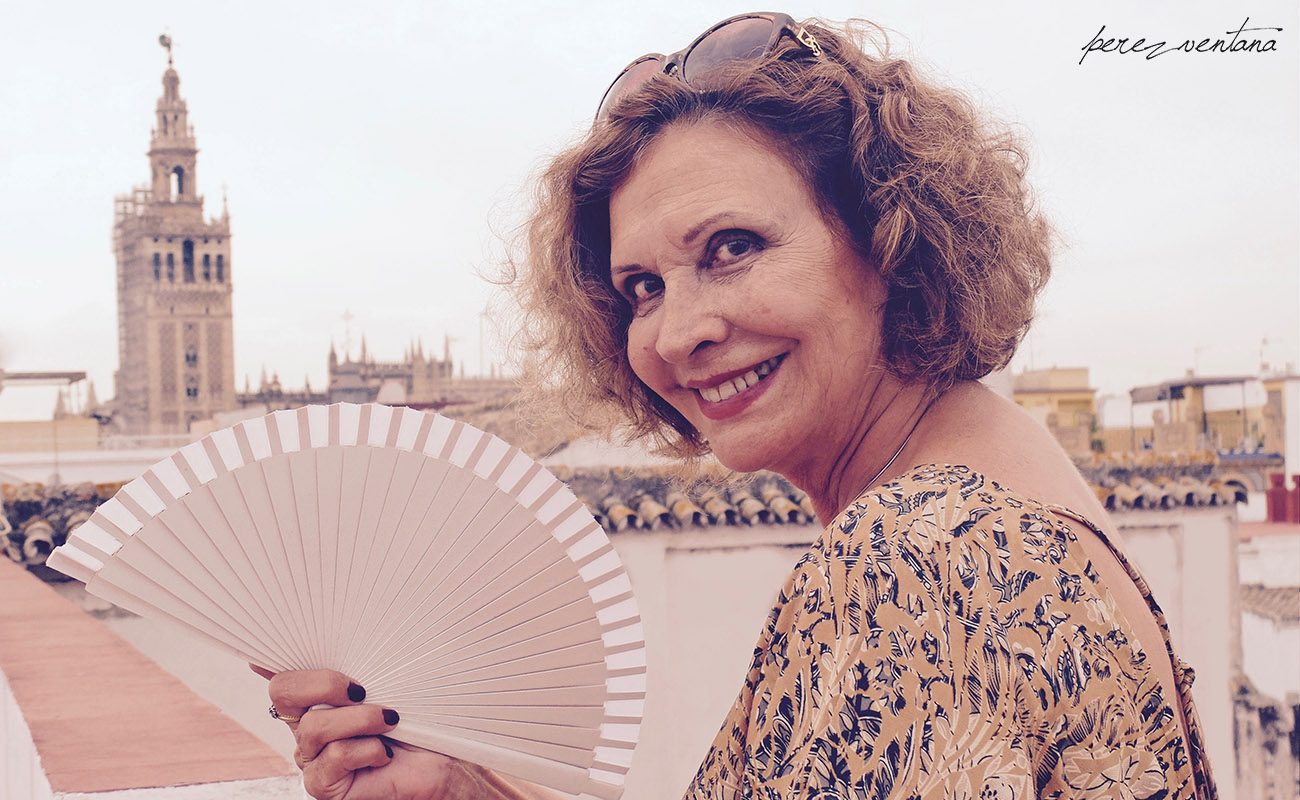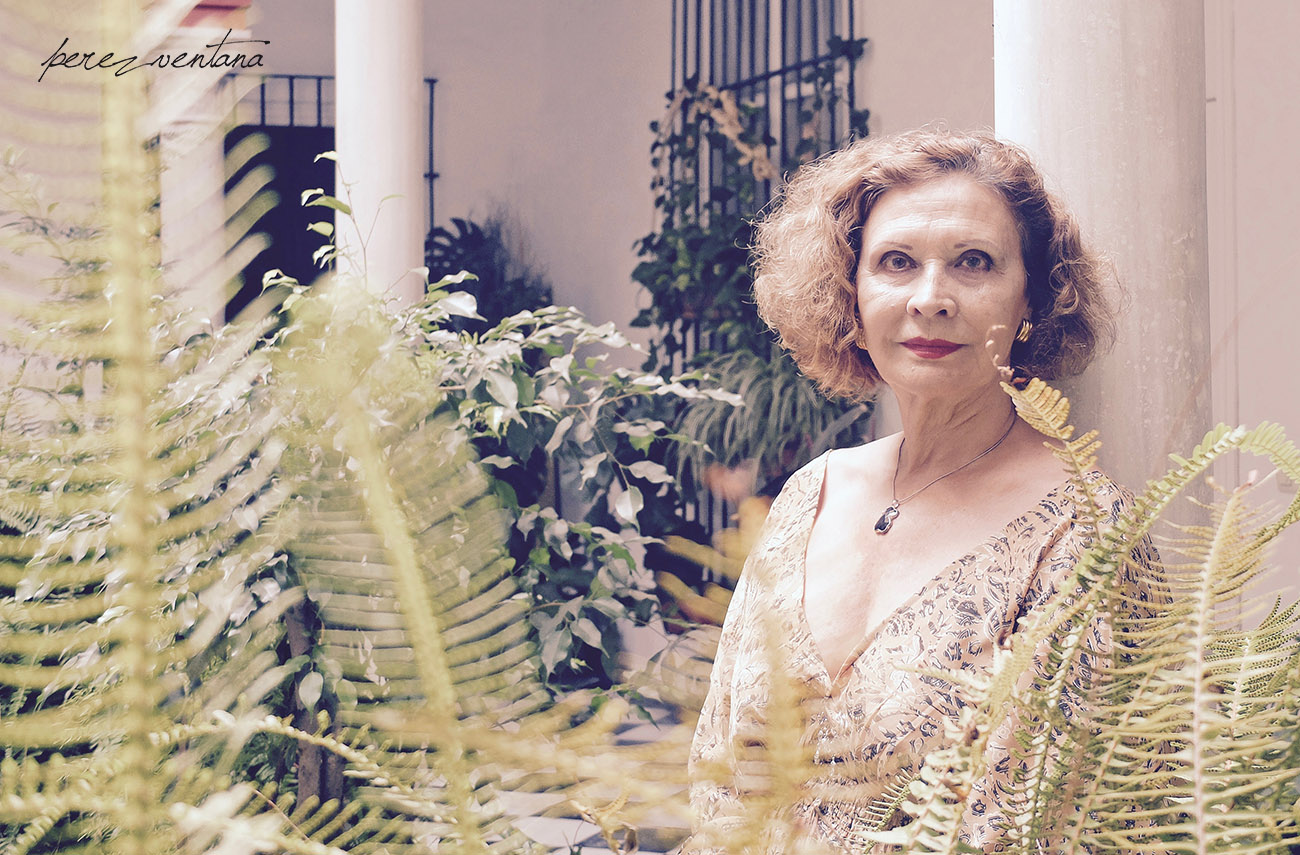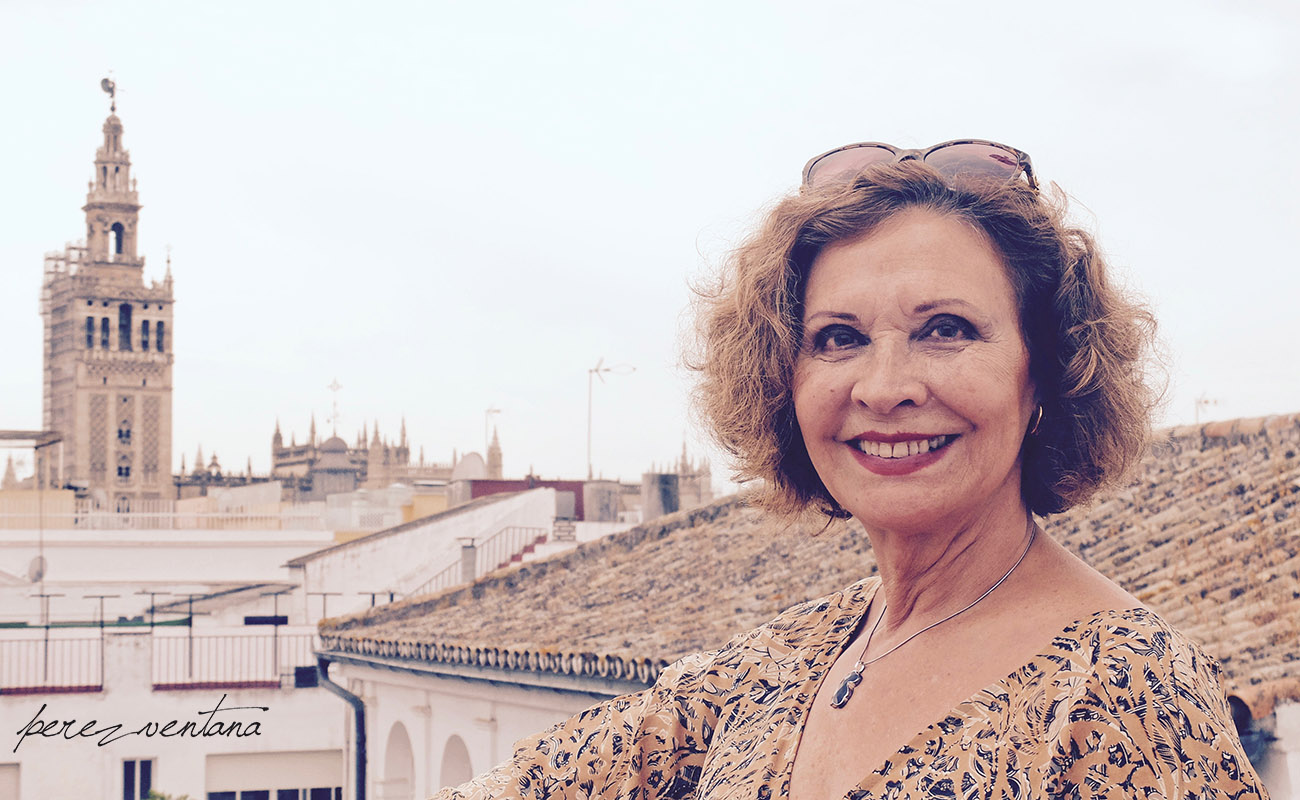Merche Esmeralda: «When I attend a flamenco show I don’t want to see a circus performance»
This celebrated bailaora talks about the Seville school, the elegance in performance, the current state of flamenco dance, the technique of the most elaborated footwork and of that dreamed hug of Niña de los Peines. A purebred artist, like the music she has devoted her life to.

«Baile flamenco has given me life. In the hardest moments of my life, just dancing made me feel free». Merche Esmeralda, born in Seville, is one of the most important artists in flamenco and Spanish dance. She has performed in the best tablaos, theaters and festivals of Spain. She was the leading dancer in the Ballet Nacional de España for over a decade, giving us, among many other jewels, the unsurpassed performances of Amor brujo and Medea. Her artistic career spans over fifty years and she has taken flamenco to all continents, both as an artist and as a prestigious teacher of dance. Antonio el Bailarín stated that «she’s the dancer with the most perfect movements that has ever existed». She has been awarded the highest honors that can be granted to any artist: Premio Nacional de Baile at the 1968 Córdoba contest, Compás del Cante in 2007, Golden Medal of Merit in Fine Arts in 2011. «Flamenco has given me a lot, but all I’ve given it is my love».
– Allow me to begin by reading a paragraph from a review of your performance in the 1994 Bienal de Sevilla written by our director, Manuel Bohórquez: «The baile of Merche Esmeralda, particularly por tangos, made me want to beg her on my knees to quit the civilized world so she could join me on a desert island where we would wait together for God’s calling».
– Hahaha. That’s so cute. Manuel is so hyperbolic, typical Andalusian. I always appreciate those things. What we artists really want is to touch people’s hearts.
– People have said that you were the most complete bailaora of your generation.
– All I can say is that I loved baile. I gave it my time and effort. But it’s for others to judge. My mother used to say that I was an apprentice of everything and master of nothing. If there were a different way of dancing, I’d try to learn it. Dance must be written with capital D. Then there are the sub-genres: classical, neoclassical, bolero school, Spanish classical, flamenco… Each has its form of expression, depending on the artists’ life experiences and where they learned it. I’ve met dancers who would travel to Galicia and Aragón in northern Spain to learn the most basic dance styles. I’ve enjoyed researching and learning about other things, but this has no merit. My only merit has been loving baile. Then, I’ve got the body that God has given me…
– Does Seville owe you anything?
– Look, in few words: at home, people used to tell me that it was better having a lucky star than being a star. My lucky star was having a body suitable for dancing and my love of dance. I don’t owe anything to anyone. Everything I’ve achieve has been through my own effort. Well, I’m indebted to Adelita Domingo. One time when my father was sick, she gave me dance lessons for free. Such is my life.
«Flamenco is like a purebred horse, a fabulous, untamed animal. At first, we admire its wild character, but then it’s tamed and can be enjoyed in a different way, as we ride its gallop… The Seville school is like that.»
– Your style of baile has always been the Seville type.
– Of course, that’s who I am. Even when I argue, I’m a forceful and intense woman, but I can’t be aggressive. Every person is born with their own personality, and mine is the Seville type. It suits me much better than any other stronger type. Yet, when I adopted that style of baile, I wasn’t aware of my choice. At the time, I didn’t know anything about the Seville school of baile.
– I’m sure you can define it now.
– It’s a more academic and stylized style of baile. There is another type of flamenco that is more closed, more impulsive, bolder. Flamenco was born out of the primary expressions of strength and joy. It’s unaware of what dance behavior should be. Flamenco is like a purebred horse, a fabulous, untamed animal. At first, we admire its wild character, but then it’s tamed and can be enjoyed in a different way, as we ride its gallop… The Seville school is like that.
– Does Seville neglect its artists?
– This happens not just in Seville, but all over Spain. If many of our great artists had been born in England, France or the United States, they’d be treated like gods. Here, like the saying goes, is “el muerto al hoyo y el vivo al bollo” [roughly translated as “a hole for the dead and a roll for the living”]. When artists die, we wish them glory in Heaven but promptly forget them. We have many great artists who have elevated Spanish dance and have performed in the best stages all over the world but have been completely forsaken.
– We would think that the greatest appreciation of the masters would be by their students, not so much by fellow artists.
– Indeed, but the younger artists seek something else. They like to swim against the tide, against life’s currents. Dance is culture and culture is always changing, just like society does. Yet, I always make a point of teaching my students about the origins and forerunners of this art. When I was just 16 years old, I walked all over Seville looking for the book by Fernando el de Triana, so I could learn all about the old artists. Everyone who gets introduced to flamenco must know who the artists of the old days were and how they did their things, so they can feel a greater respect for this art when they perform it.
«It’s not normal to attend a performance that is nothing but a display of technique. I’m sorry, but they’re supposed to turn around and move me, make me feel something. Make me stand up, make me want to say ‘ole’. There’s no point on making three twirls if they are going to fall flat on the fourth. Show me what’s beautiful about you»
– These days, we attended a presentation in Seville about an alliance among flamenco tablaos to guarantee the quality of flamenco shows. Is there a flamenco for serious enthusiasts and another for the wider public and tourists?
– It’s true. There is a high-quality flamenco for the serious enthusiasts, and another for muddling through. But not everyone is the same. I’ve seen people performing in a tablao as if they were in a world-famous theater. Others don’t really care. There are all kinds. It’s true that we have to look after flamenco.
– What aspects in particular should be taken care of?
– Appearances. People should not dance with their hair worn loose, without wearing a flower, without a mantoncillo. I would never attend a wedding wearing a bikini. I wouldn’t go shopping in my night gown. Each art genre has its particular style of clothing. Artists must be respectful with their public. I’ve always been very demanding about this.
– You have always been very elegant. Is that something innate, or something people can learn?
– I’ve spent a lot of money in garments. I’ve always though that if baile allowed me to live comfortably, the least I could do was to treat it with respect. Whenever I go some place, I try to emulate its style. Whenever I prepared a choreography, I first imagined which dress I would wear. Clothing and choreography go hand in hand.

Merche Esmeralda at the house of her friend Inmaculada Bustos. San Isidoro Street, Seville. Photo: perezventana
– What’s your opinion about the paths baile flamenco is treading nowadays?
– There are many things I don’t like. Indeed, If I know I won’t like a show, I don’t bother attending. This way I can avoid feeling upset and sad. Like the actress Florinda Chico (rest in peace) used to say, I’ve reached a very bad age. All I want now is to enjoy good times and smiles
– Share with us what bothers you, doña Merche.
– Dance is an art with capital D, like I said, no matter the style. So, when I attend a show of baile flamenco I don’t want to see a circus act. I don’t like when they try to make it more difficult. Contemporary dance is something else, it requires other techniques. But in flamenco, which is what I like, I want to see the forms, the essence, the expressions, the behavior. I already know that the artists won’t dance like Carmen Amaya or Pastora Imperio. It’s not necessary! They live in a different time, with different techniques. I know that it’s not a matter of dancing like people danced in the early 1900s or in the 1800s, but those days set a manner of behaviors. It’s not normal to attend a performance that is nothing but a display of technique. I’m sorry, but they’re supposed to turn around and move me, make me feel something. Make me stand up, make me want to say “ole”. There’s no point on making three twirls if they are going to fall flat on the fourth. Show me what’s beautiful about you. Don’t show me difficulty or the most elaborate footwork. I really don’t care about that. When someone goes to watch a performance, what they really want to experience are the feelings. In that context, the difficulty is just a means to an end.
«When I was just 16 years old, I walked all over Seville looking for the book by Fernando el de Triana, so I could learn all about the old artists. Everyone who gets introduced to flamenco must know who the artists of the old days were and how they did their things»
– What about cante?
– Some cantaores move me but let me tell you something: I prefer traditional cante. I have a hard time understanding the tones used nowadays, I’m not used to them. If I could choose, I’d pick Bernarda, Mairena or Menese.
– Now we have Miguel Poveda in cante and Israel Galván in baile, to name two leading stars. Don’t you like them?
– Israel dances traditional flamenco very well, when he wants to. Then he does his other things, in that world he wants to show. That’s respectable, there’s no question about it. I could watch one of his performances one day, to see the paths he has taken. Yet, I really don’t like those things very much. I enjoy flamenco the best I can.
– Last summer, during the summer courses of the Olavide University in Carmona, you told a story about the moment you faced your mother and told her you wanted to be an artist. Quite a situation.
– My mother had eight children, but I was the only one who survived. So I was her only child, her pampered girl. Mari Pepa — mother of Malú —, who was an extraordinary girl, performed in France, and she was given wonderful gifts there. Her mother, who was a friend of my mother, told her “Your daughter should see this!”. Me, in all innocence, told my mom: “See, mom? If I were an artist, too…”. Then the mother of Mari Pepa told my mom: “But does your daughter likes performing? She’s always dancing. Why don’t you take her to an academy so she can learn a few steps?” That’s how I started studying at the academy of Adelita Domingo. One day we were going to perform for the children of the San Juan de Dios hospital, and Adelita told my mom that I had a lot of talent. She laughed it off, but they bought me a dress and I experienced what it felt like being on a stage wearing a beautiful dress and being cheered by the public. So I faced my mother: “Mom, I don’t want to go to school anymore. All I want is to dance”. My mother replied: “Oh, what a disappointment. It’s all my fault, for taking you to see the gifts of Mari Pepa”. In the end, she agreed on the condition that she would not leave my side until I got married. And if I quit school, I should keep studying. So I had to study typing.
– And later you performed as ‘Merchi Rodríguez’ at the tent of the Círculo Labradores in the Fair of Seville. ‘Merche Esmeralda’ definitely has a better ring to it.
– That was my real name, Merchi Rodríguez. When we met Jesús Antonio Pulpón to get paid for our performance, he told my mom that her girl danced beautifully and had a bright future ahead, but said that my name sounded as if I were a worker in a food warehouse. He said that my stage name had to have a strong ring to it.
«We walked by the bar on Campana Street and my mother would tell me : “Look, that man with the hat is Pepe Pinto”. Later, when I became an artist of some renown, I regretted not having gone into that bar and given a hug to Niña de los Peines when I was a young girl.»
– How was Seville like, in your childhood?
– Very beautiful. Probably there was a lot of poverty, but people were very generous. I lived in a tenement. There was a young woman with two children and her husband died suddenly. My mother raised her two daughters. And if my mother couldn’t, another neighbor would step in. There were beautiful, generous souls. At Christmas, everyone contributed with whatever they could.
– Were you in touch with Seville’s flamenco scene?
– Not at all, but my family loved flamenco. My grandmother used to sing saetas to Saint Benedict. When I was ten or twelve years old, she taught me to sing the simple saeta, the short one, which then changes into a martinete. Both my uncles were very good cantaores, but they had stage fright. My grandmother told me that one day they went to perform in a festival, but they couldn’t get on stage because they were terrified. And my uncle Rodrigo Gamero left a big flamenco collection after he passed away. He was a keen aficionado. He would get up in the morning with flamenco and go to bed at night with flamenco.
– Which artists inspired you in those days?
– Without really knowing the career of these great artists, I always loved Pepe Pinto and Niña de los Peines. They had a bar on Campana Street. When we went to that street for the Holy Week processions, my mother walked by the bar hoping to have a glimpse of them. She would tell me: “Look, that man with the hat is Pepe Pinto”. Later, when I became an artist of some renown, I regretted not having gone into that bar and given a hug to Niña de los Peines when I was a young girl.
– What has flamenco contributed to your life, and what has been your contribution to flamenco?
– Flamenco being as great as it is, I don’t think I’ve contributed much to it. But flamenco has given me a lot. At times, it has given me life. Because in the hardest moments of my life, just dancing made me feel free. Flamenco has given me culture, because as I love it so much, I tried to learn all about it. It has given me the love of a wonderful public. It has allowed me to experience things that few people can. It has allowed me to meet wonderful people. Flamenco has given me a lot, but all I’ve given it is my love.
– What would you tell the young people who devote their lives to flamenco?
– I don’t often give advise. I never forced my children to do something they didn’t want to do. Any job is hard enough already, so there is no point in doing something we don’t like to do. That’s what I would tell a dancer: dance is very difficult, very demanding. It’s necessary to do it over and over, and if we’re idle for a month we have to start over from scratch. For a dancer to enjoy such thing, they have to really love it and be willing to fully commit to it. If not, it’s too much work for something we’re not passionate about.

Bailaora Merche Esmeralda, with the skyline of her beloved Seville in the background. Photo: perezventana




